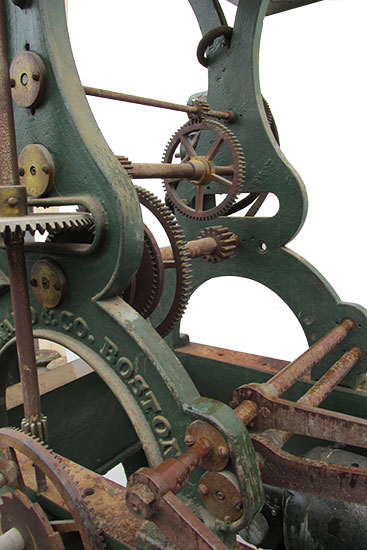

These cookies are used to measure the use of the website and traffic sources in order to gain information required to improve the functioning of the website. They do not store any personally identifiable information and are deleted once you leave the website. Overall: 49 in x 25 in x 25 in 124.46 cm x 63.5 cm x 63.These cookies are essential to the functioning of the website and they cannot be disabled. United States: Massachusetts, Boston Measurements Master clock Mechanical, Weight-Driven Tower Clock Date made "Indeed," boasted the Smithsonian's annual report for 1881, "it is believed that in no building in the world, with the exception of the Grand Opera House in Paris, is there so perfect and complete an application of electricity to practical services." Object Name

The clock room also housed a telephone switchboard, a watchman's clock, a central burglar alarm, and call bells-all of which, like the time distribution system, relied on the newly harnessed power of electricity. Tunnels under the floors carried the wiring. First housed in the north tower of the Arts and Industries Building, the clock movement distributed impulses to eighteen dials in that building and the Castle, the Smithsonian's earliest building. This clock and dial were components of a system that served the Smithsonian between about 18. Batteries at the base of the master clock supply current.

310,570), where electromagnets advance the hands. Once a minute the escapement, through a pair of rotary switches, closes an electrical circuit and sends an impulse to the slave dial (Cat. Howard and Company of Boston, is a mechanical tower clock movement equipped with electrical contacts. The museum collection contains such a timekeeping system. More economical to install and more convenient to maintain than an equal number of independent clocks, the system also ensured that all dials within the system agreed. The master clock could also drive other time signals like classroom bells, factory whistles, or time stamps. These slave clocks could be located anywhere, without regard for convenience of winding, because they needed none. In such a system, a central timekeeper, the master clock, sent periodic impulses, usually electric or pneumatic, to any number of secondary or slave clocks. In places that required many clocks-factories, office and public buildings, or schools-time was often distributed by a system of "master" and "slave" clocks.


 0 kommentar(er)
0 kommentar(er)
